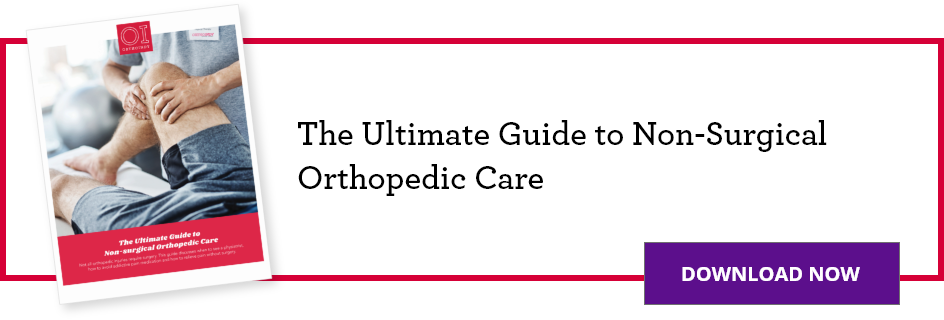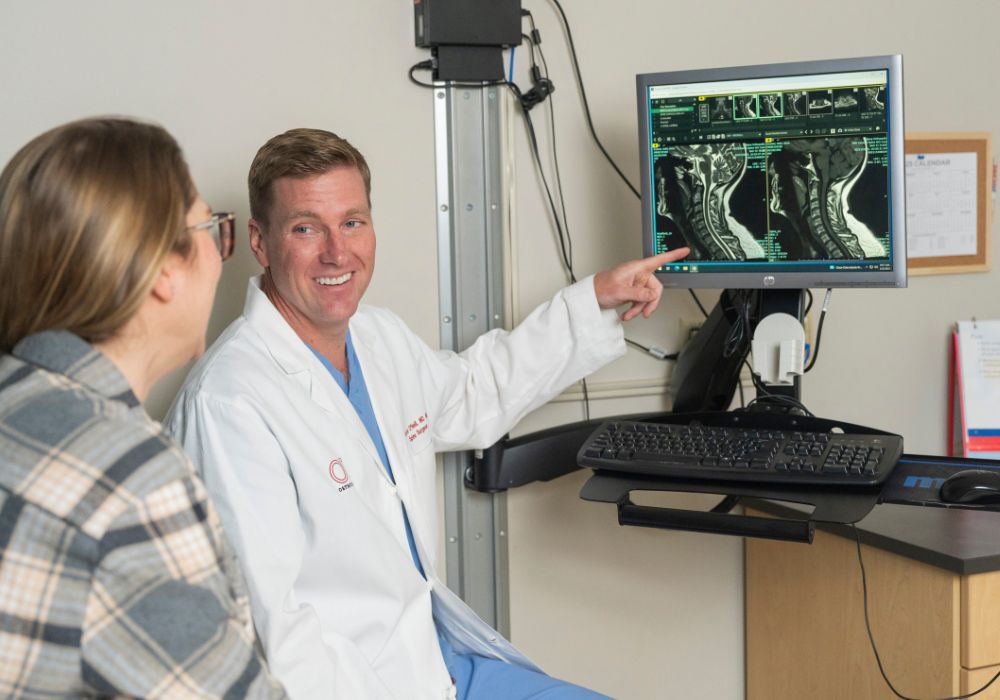THIS POST IS PART OF THE ULTIMATE GUIDE TO NON-SURGICAL ORTHOPEDIC CARE
As a physiatrist, also referred to as a physical medicine and rehabilitation physician or a non-operative pain management doctor, the number one goal is to help patients improve their function and quality of life.
Sometimes this means the patient will work solely with their physical medicine and rehabilitation physician or they may seek the care of a variety of providers. A physiatrist is trained to lead this collaborative care and coordinate with a team of medical providers.
Physiatrists work with
- Physical therapists and occupational therapists
- Orthopedic surgeons
- Rehabilitation nurses
- Neurologists and neurosurgeons
Physiatrist vs physical therapy
Physiatrists, occupational therapists and physical therapists treat patients with many of the same types of conditions. However, physiatrists are medical doctors and have completed medical school plus four years of residency training. Often, a physiatrist will prescribe specific exercise programs that a patient can do at home or with an occupational or physical therapist.
Exercise programs are designed to
- Increase range of motion
- Strengthen muscles
- Lessen pain
- Improve overall body function
“Rather than only seeking care with a physiatrist, occupational or a physical therapist, working with multiple specialists often allows greater improvement for patients,” said Dr. Ronald Miller, OrthoIndy physiatrist. “Therapists and physiatrists collaborate and communicate to ensure patients are receiving appropriate treatment.”
Surgical versus non-surgical treatment
For a variety of reasons, non-surgical treatment may fail to provide patients with satisfactory results. A surgical referral may then be the appropriate next step.
“OrthoIndy physiatrists work closely with OrthoIndy surgeons to provide patients with the best possible treatment,” said Dr. Miller. “We have surgeons that refer their patients to us for non-surgical care, and we often refer to the surgeons when it appears that surgical intervention will be necessary.
Rehabilitation nurses and physiatrists
Physiatrists work with rehabilitation nurses to come up with a treatment plan for someone after an injury or surgery. Physiatrists customize a plan for a patient and work with a nurse to instruct him or her on how the patient will benefit from rehabilitation.
Neurologists, neurosurgeons and physiatrists
Whereas physiatrists work on pain issues throughout the body, neurologists or neurosurgeons focus on neurological disorders, which affect the brain or other parts of the nervous system. Physiatrists and neurologists or neurosurgeons often work hand in hand, serving as consultants for each other’s patients.
Working as a team, physiatrists are able to provide the best care for their patients to help them return to their normal daily activities.
Make an appointment or learn more about non-surgical orthopedic care at OrthoIndy.
Schedule an appointment
Your well-being is important to us. Click the button below or call us to schedule an appointment with one of our orthopedic specialists. If your injury or condition is recent, you can walk right into one of our OrthoIndy Urgent Care locations for immediate care. For rehabilitation and physical therapy, no referral is needed to see one of our physical therapists.






